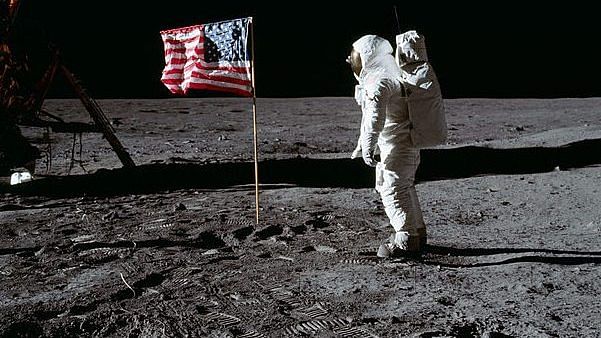Time has likely worn the sharp edges off the boot prints and turned the landing module dark and dingy – a faded shadow of the pictures from 1969. The flag at the Apollo 11 site appears from orbit to be gone, probably blown over by exhaust from the ascent module. Erosion is different on the moon: There’s no water, wind or animals, but there are ultraviolet light, micrometeorites and cosmic rays that over time will turn humankind’s creations and symbols to dust.
But something of the Apollo 11 site could last for hundreds or thousands of years – remains that will tell a story that should inspire people when we reach the 500th or 1,000th anniversary of those first footprints on the moon, made 50 years ago this month. These pieces of history need our protection.
Citizens of the far future may have developed space travel technology that makes rocket science look simple-minded, but that won’t quench their interest the history of exploration. Our modern air travel hasn’t cooled interest in the low-tech voyages of Magellan, Lewis and Clark, and Shackleton.
There are about 50 sites with human artifacts – six sites of human exploration plus dozens of dead rovers, crash-landed and soft-landed craft, and orbiters that have fallen, said Alice Gorman, a space archaeologist from Flinders University in Australia. There’s equipment that originated in China, India and Israel as well as the U.S. and the Soviet Union.
How safe are those relics? The sites are tiny, and the moon’s surface large, so there’s surely no reason to disturb these treasures for the sake of science, mining, tourism or whatever else people want to do on the moon. NASA has designated the Apollo landing areas as “heritage” sites, though they don’t currently have any legal protection from any nation or any international treaty, as explained last week in the New York Times.
Scientists might find justification to return to those sites, say, to see whether samples taken from the Apollo missions are unique or typical. But that, said Gorman, can be done without getting close enough to disturb any human artifacts.
But of course scientists, tourists or hobbyists operating drones may want to revisit the Apollo sites simply because they are the most interesting parts of the moon. “As tempting as it is – and I’m a space archaeologist so I would love to see these sites – I think we should show a little bit of self restraint,” said Gorman.
Some have proposed visiting the Apollo sites with the goal of preserving them, she said, by putting up a cosmic-ray cover and micrometeorite-proof shell or some other scheme. The important thing, she said, is that we wait till we know what we’re doing. Humanity may have a brand new technique for investigating the sites without disturbing them by 2050, she said, “and it would be a shame if in 2025 some idiot in a lunar rover drove over the top of the Apollo 11 site.”
While the history of lunar exploration is preserved in pictures, records and archives, nobody knows whether those will last, and how their interpretation might change over the millennia. Future humans may run into problems that leave big gaps in their understanding of space exploration. And when people return, they may want very much to put together the story of space travel’s 20th century origin. Natural elements will wear away our heritage sites slowly, and we may not be able to stop that, but we owe it to the future to save them from ourselves. –Bloomberg
Also read: India’s Chandrayaan-2 matters, but don’t dream about moon picnics with friends just as yet



